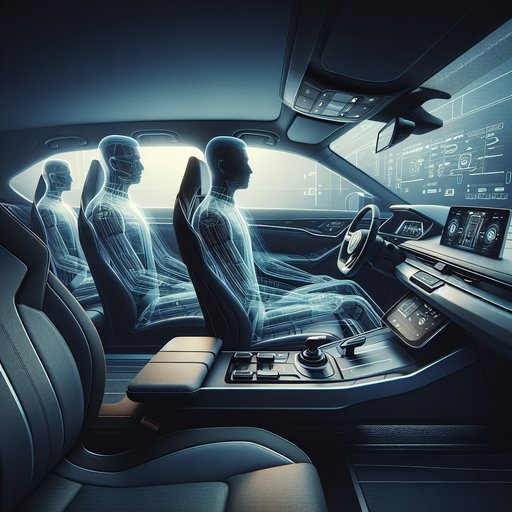
We spent a week in a 2024 Subaru Forester Touring evaluating driver ergonomics for short (5'2"), average (5'9"), and tall (6'4") drivers, with a focus on seating, visibility, pedal reach, steering adjustment, and blind spots in real traffic and tight parking scenarios.
Our test car was a 2024 Forester Touring (2.5L flat-four, 182 hp/176 lb-ft, CVT, standard AWD, 8.7 in ground clearance). Key comfort hardware includes a 10-way power driver’s seat with power lumbar, tilt/telescoping steering, and large mirrors with blind-spot monitoring and rear cross-traffic alert. We drove 410 miles over city commutes, suburban errands, and nighttime highway runs, plus repeated parking-lot maneuvering. Method: each driver started with a neutral seat position, then dialed in height, fore-aft, recline, lumbar, and wheel tilt/telescope until achieving a safe wrist-on-top steering posture and clear sightlines.
We verified over-shoulder visibility with traffic merges and used cones to simulate curb cuts, roundabout entries, and offset intersections where A-pillars often intrude. Seating and pedal reach: the 5'2" driver could raise the cushion sufficiently to see the hood edges without needing an extra cushion, and still maintain a slight knee bend with comfortable access to brake and throttle. Pedal alignment is straight-on, with a supportive dead pedal that prevented hip twist. The 5'9" driver found a natural hip-point and appreciated the adjustable lumbar on longer stints.
At 6'4", full rearward seat travel and modest cushion drop preserved headroom even with the panoramic moonroof; thigh support was adequate though a longer cushion would be welcome on multi-hour drives. Steering adjustment and control reach: the column’s tilt and telescope range allowed all drivers to achieve a relaxed elbows-bent posture without overreaching. The tall driver could pull the wheel close enough to avoid hunching forward despite the seat being all the way back. The short driver lowered the wheel without obscuring the upper gauge cluster (digital speed remains visible).
Stalks fall readily to hand; large winter gloves didn’t trigger accidental wiper or light inputs. Pedal spacing is generous, with a progressive brake pedal that’s easy to modulate in stop-and-go. Visibility and blind spots: this is the Forester’s ace. Upright windows, a relatively low beltline, and small front quarter windows reduce A-pillar masking at angled junctions; we still noted minor blockage of pedestrians when the pillar aligned with roundabout entries, but a slight torso lean resolved it.
The squared-off rear glass makes reversing intuitive, and the camera’s image is clear in rain. Over-shoulder checks benefit from the rear quarter glass; blind-spot indicators are bright and well-placed. Lack of a 360-degree view is the only miss—parking sensors and reverse automatic braking help, but parallel parking in tight urban canyons would be even easier with a surround view. Overall, the Forester accommodates a broad range of body types (roughly 5th to 95th percentile).
Short drivers get adequate seat height travel and clear sightlines without pedal compromises; average-height drivers will feel instantly at home; tall drivers keep headroom and knee room, though they may wish for a longer seat base. If ultimate outward visibility and low-effort daily drivability are priorities, this Subaru remains a benchmark. Add the memory seat if multiple drivers share the car.












